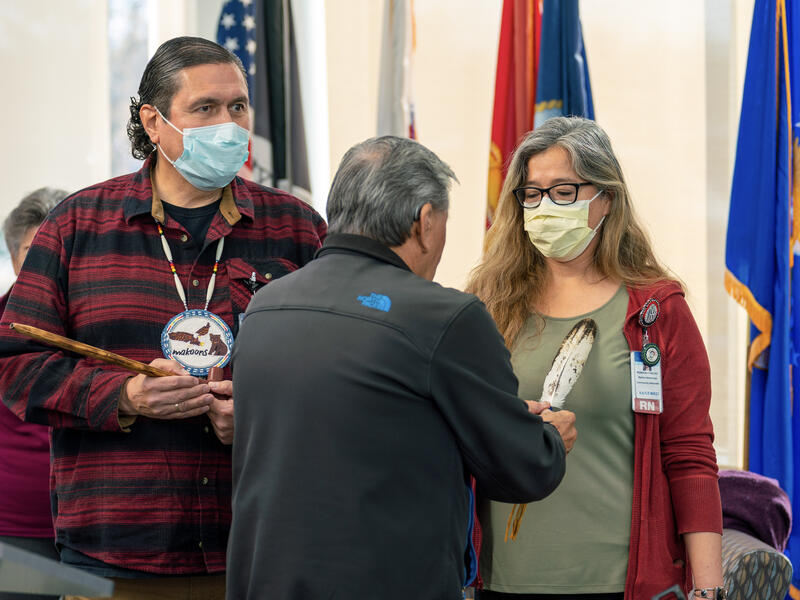Sanford Health is committed to improving the health of your community.
While individual choices are important, your health also depends on several community factors like food security, public safety, education, affordable housing and air quality.
Every three years, Sanford Health and community stakeholders conduct a public survey to give community members an opportunity to voice their health care concerns. The Community Health Needs Assessment survey helps Sanford understand unmet health needs and set priorities among local partnerships and initiatives to address them.
Through the survey, community members answer simple, confidential questions that help Sanford Health learn more about the health and well-being of our communities. The results are then analyzed to identify opportunities to address gaps between needs and services. Health systems and community partners then collaborate on strategies and prioritize resources to improve the health of our communities.
“The Community Health Needs Assessment is a critical process where Sanford Health works with community stakeholders to take inventory of growing community need,” said Natasha Smith, director of health equity and experience at Sanford Health. “The process ensures that we are seeking out the lived experiences, gaps, and needs that exist in the communities we provide care so that we can be a catalyst for bridging, working collaboratively, and working diligently to meet those needs.”
Delivering access to care
Information from the most recent assessment informs Sanford Health strategy in addressing the organization’s efforts to deliver health care, proper nutritional opportunities and mental health care and support.
Specifically, that means reducing barriers and expanding services, especially in rural and traditionally underserved areas.
Sanford Health’s substance use disorder program in Bemidji, Minnesota, was recently certified as one of less than two dozen Wellbriety Certified Treatment Centers in the nation.
To become a Wellbriety Certified Treatment Center, a substance use program must meet specific criteria upheld by the White Bison organization.
This certification ensures that all Sanford counselors are trained in and incorporate culturally based curriculum. They also provide access to a Native American elder who conducts ceremonies, provides teachings and incorporates traditional Native American healing practices.
Ending food insecurity
Sanford Health seeks to ensure access to healthy food, recognizing it as a basic need and key component to holistic health care.
To that end, Sanford Health has deployed a two-pronged approach to addressing food insecurity.
It begins with significant financial contributions to food banks across Sanford’s footprint including South Dakota, North Dakota, Minnesota and Iowa. Secondarily, many Sanford facilities, both metro and rural, have set up local food pantries in clinics and hospitals.
“Unmet health related social needs such as food and housing insecurity exacerbate poor health and quality of life outcomes,” said Lindsay Daniels, Sanford Health system executive director for care management. “The CHNA identifies these needs so that our health system can partner with community organizations to provide whole-person care and offer critical support for patients.”
Linking to local resources
Sanford Helps is a website for patients to better connect to social care community resources. This online tool directs patients and consumers to local organizations that can help them. Users can self-refer or be referred by care management staff.
Patients may access the resource from an after-visit summary, their My Sanford Chart account, and via sanfordhealth.org. They then enter their ZIP code and can see available free or reduced cost programs nearby.
The community resource is available for anyone in need, not just current Sanford Health patients.
Improving behavioral health care
Increased access to behavioral health care is a vital part of Sanford’s effort to address community concerns. That includes additional behavioral health providers and expanded screenings, as well as prevention and support for substance abuse.
In Sioux Falls, South Dakota, the launch of The Link represents a unique collaborative effort to address these community needs. Established in 2021, it includes funding and resources from the city of Sioux Falls, Minnehaha County, Avera Health and Sanford Health. It offers a safe place for people experiencing a nonviolent behavioral health crisis or needing care for substance abuse disorders.
Across the region, Sanford Health hospitals and clinics are adding behavioral health providers, including embedding integrated health therapists at primary care sites for on-the-spot access to care.
Sanford Health locations are also expanding behavioral health screenings. As an organization, Sanford has launched direct-to-consumer virtual behavioral health appointments for adults and children ages 10 and older. Patients can access counseling and psychiatry services, and in some cases, get care the same day.
The growing need for mental health support for youth is being addressed through partnerships with local schools for services and training. This support includes the training program known as BeHEARD, or Behavioral Health Education and Response Development.
Sanford also has launched the new Sanford Bemidji Crisis Center, which offers an innovative way to treat patients in need of emergency mental health care.
The center houses an EmPATH unit – which stands for Emergency Psychiatric Assessment, Treatment and Healing – and addresses the need for adult inpatient beds. There are also separate units for children and for families, as well as spaces designed for cultural and spiritual healing, particularly for Indigenous patients.
Looking ahead
The 2023 Community Health Needs Assessment is underway. Find Sanford Health’s completed assessments online.
Learn more
- Sanford Health connects patients to community resources
- Wellness pantry program feeds patients at doctor visits
- Sanford, UND unveil Behavioral Health Bridge
…
Posted In Behavioral Health, Chemical Dependency, Community, Healthy Living, Leadership in Health Care
